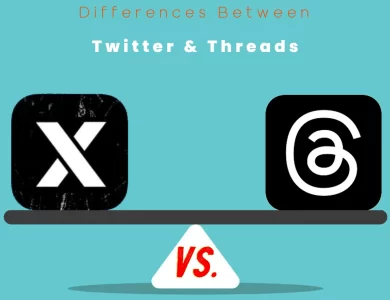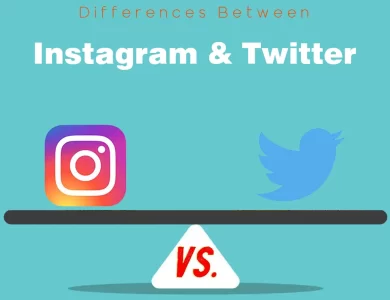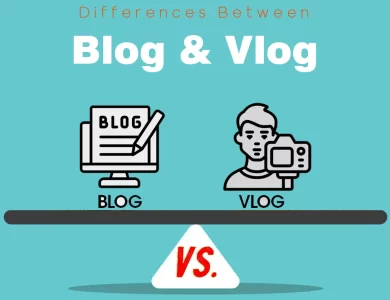
| Aspect | XLS (Excel 97-2003 Workbook) | XLSX (Excel Workbook) |
|---|---|---|
| Software Support | Older Excel versions Open-source alternatives | Microsoft Excel Other spreadsheet software Data processing tools |
| File Size | Smaller | Larger |
| Storage Efficiency | Limited | Improved |
| Password Protection | Basic | Enhanced |
| Encryption | Limited | Strong |
| Recovery and Repair | Limited | Improved |
| Advanced Functionality | Limited | Comprehensive |
| Data Formatting and Styling | Limited | Comprehensive |
| Macro Security | Limited | Enhanced |
| Long-Term Accessibility | Limited | Enhanced |
When it comes to working with spreadsheets, Microsoft Excel is undoubtedly one of the most popular choices. Within Excel, there are two primary file formats that are frequently used: XLS and XLSX. These file formats may seem similar at first glance, but they have some crucial differences that can affect how you work with your data. In this comprehensive guide, we will delve into the key differences between XLS and XLSX, shedding light on which format might be the best fit for your specific needs.
Differences Between xls and xlsx
The primary distinctions between XLS and XLSX lie in their file formats and capabilities. XLS, or Excel 97-2003 Workbook, is an older binary format with limited features, making it suitable for basic spreadsheets but less adept at handling large datasets and advanced functionalities. In contrast, XLSX, known as Excel Workbook, utilizes an XML-based format, offering improved storage efficiency, robust security features, and comprehensive support for modern Excel tools, making it the preferred choice for users seeking compatibility, enhanced functionality, and long-term viability in their spreadsheet files.
File Format Basics
Before we dive into the differences, let’s start with the basics of these file formats:
XLS (Excel 97-2003 Workbook)
XLS stands for “Excel 97-2003 Workbook.” It was the default file format used in Microsoft Excel versions released between 1997 and 2003. XLS files store data in a binary format, making them relatively compact. However, they have limitations when it comes to handling larger volumes of data and advanced features.
XLSX (Excel Workbook)
On the other hand, XLSX is the newer file format introduced with Microsoft Excel 2007 and onwards. It uses a different approach by storing data in a compressed XML format. This XML-based structure allows for more efficient storage and improved compatibility with modern features and larger datasets.
Now that we have a basic understanding of these formats, let’s explore their differences in greater detail.
Compatibility
When it comes to compatibility, the choice between XLS and XLSX can significantly impact your ability to work with your spreadsheets across different software and platforms.
XLS Compatibility
XLS files have been around for quite some time, and they are supported by a wide range of spreadsheet software, including older versions of Microsoft Excel, as well as open-source alternatives like LibreOffice and Apache OpenOffice. However, they may not fully support the advanced features introduced in newer Excel versions.
XLSX Compatibility
XLSX, being the more modern format, offers broader compatibility with various software applications. It is not only supported by Microsoft Excel but also by other spreadsheet software and data processing tools. This format ensures that your spreadsheet will be accessible and fully functional across different platforms, reducing compatibility-related issues.
Let’s summarize this comparison in a table for a quick reference:
| Aspect | XLS Compatibility | XLSX Compatibility |
|---|---|---|
| Software Support | Older Excel versions | Microsoft Excel |
| Open-source alternatives | Other spreadsheet software | |
| Data processing tools |
File Size and Storage Efficiency
The size of your spreadsheet files can be a crucial factor, especially when dealing with large datasets or sharing files through email or cloud storage services.
XLS File Size
XLS files are known for their relatively small file size, thanks to their binary format. This can be advantageous when you need to conserve storage space or send files with size limitations. However, the compact nature of XLS files can lead to limitations in terms of accommodating extensive data or complex formatting.
XLSX File Size
In contrast, XLSX files tend to be larger than their XLS counterparts due to the XML-based format and the inclusion of additional metadata. While this might seem like a disadvantage, it is offset by the format’s improved storage efficiency. The compression techniques used in XLSX reduce file size while maintaining data integrity. This makes XLSX a better choice for handling substantial amounts of data without sacrificing performance.
Let’s visualize this difference in file size:
| Aspect | XLS File Size | XLSX File Size |
|---|---|---|
| File Size | Smaller | Larger |
| Storage Efficiency | Limited | Improved |
Data Security and Privacy
Protecting your data is paramount, and the choice of file format can influence the security measures you can implement.
XLS Data Security
XLS files offer basic password protection options to restrict access. However, this protection is relatively weak, and experienced users can often bypass it with readily available tools. If you need to secure sensitive information, you might find XLS limiting in this regard.
XLSX Data Security
XLSX, being a more recent format, provides enhanced security features. It supports modern encryption standards, making it significantly more difficult for unauthorized users to access your data. If data security is a top priority, XLSX is the preferable choice for your spreadsheets.
To summarize the security aspect:
| Aspect | XLS Data Security | XLSX Data Security |
|---|---|---|
| Password Protection | Basic | Enhanced |
| Encryption | Limited | Strong |
File Recovery and Repair
In the unfortunate event of a file corruption or unexpected closure of Excel, your ability to recover and repair your spreadsheet is critical.
XLS File Recovery and Repair
XLS files have a relatively limited capacity for recovery and repair. If an XLS file becomes corrupted, it can be challenging to salvage the data, and you might lose a significant portion of your work.
XLSX File Recovery and Repair
XLSX, thanks to its XML structure, offers improved options for file recovery and repair. Excel’s built-in recovery tools are more effective with XLSX files, increasing the chances of restoring your data in case of unexpected issues.
In summary:
| Aspect | XLS File Recovery | XLSX File Recovery |
|---|---|---|
| Recovery and Repair | Limited | Improved |
Advanced Features and Functionality
The choice between XLS and XLSX can significantly impact your ability to leverage advanced features and functionality within Microsoft Excel.
XLS Advanced Features
XLS files are limited in their support for advanced features introduced in newer versions of Excel. If you require features like Sparklines, PivotCharts, or Power Query, you may find these either unavailable or with limited functionality when working with XLS files.
XLSX Advanced Features
XLSX is the format of choice for accessing the full spectrum of advanced features and functionality in Excel. It seamlessly supports modern tools, such as Excel Tables, Slicers, and the latest charting options. If you want to make the most of Excel’s capabilities, XLSX is the way to go.
Let’s sum up the differences in advanced features:
| Aspect | XLS Advanced Features | XLSX Advanced Features |
|---|---|---|
| Advanced Functionality | Limited | Comprehensive |
Data Formatting and Styling
One crucial aspect of spreadsheet files is how they handle data formatting and styling, including fonts, colors, and cell formatting.
XLS Data Formatting and Styling
XLS files have limited support for modern data formatting and styling options. While you can still apply basic formatting like fonts, colors, and cell borders, you might face restrictions when working with more advanced formatting features introduced in newer Excel versions. This limitation can affect the visual appeal and clarity of your spreadsheets.
XLSX Data Formatting and Styling
XLSX, being the more modern format, provides a wider array of data formatting and styling options. It supports the full range of Excel’s formatting capabilities, allowing you to create visually appealing and well-structured spreadsheets. If you rely heavily on formatting to make your data more understandable, XLSX is the preferable choice.
Here’s a quick summary of the data formatting and styling aspect:
| Aspect | XLS Data Formatting | XLSX Data Formatting |
|---|---|---|
| Formatting and Styling | Limited | Comprehensive |
Macros and Automation
Macros are scripts that can automate repetitive tasks in Excel. The choice between XLS and XLSX can affect your ability to create, run, and share macros.
XLS Macros and Automation
XLS files do support macros, but there are limitations. Macros in XLS files can potentially carry security risks, as they can execute code that might harm your computer or data. As a result, some security settings may disable macros in XLS files, making them less suitable for automation.
XLSX Macros and Automation
XLSX files offer improved security when it comes to macros. Excel includes enhanced macro security settings that allow you to control which macros can run and under what circumstances. This added layer of security makes XLSX a safer choice for creating and sharing automated solutions in Excel.
Let’s sum up the differences in macros and automation:
| Aspect | XLS Macros and Automation | XLSX Macros and Automation |
|---|---|---|
| Macro Security | Limited | Enhanced |
Long-Term Viability
Considering the longevity of your spreadsheet files is crucial, especially if you need to access or archive them for an extended period.
XLS Long-Term Viability
XLS files, while still supported by some software, are considered somewhat outdated. As technology advances, the compatibility and support for older file formats tend to diminish. Consequently, relying solely on XLS files for long-term storage or archival purposes may not be the most sustainable choice.
XLSX Long-Term Viability
XLSX, as the more modern and widely adopted format, offers better long-term viability. It is expected to remain supported by spreadsheet software and office suites for years to come, ensuring that your files will remain accessible and usable well into the future.
In summary:
| Aspect | XLS Long-Term Viability | XLSX Long-Term Viability |
|---|---|---|
| Long-Term Accessibility | Limited | Enhanced |
xls or xlsx : Which One is Right Choose for You?
The choice between XLS and XLSX depends on your specific requirements and priorities. To make an informed decision, let’s recap the key differences and scenarios where each format shines:
Choose XLS (Excel 97-2003 Workbook) If:
- Compatibility with Older Software: You need to share your spreadsheet with users who have older versions of Excel or alternative spreadsheet software that may not fully support XLSX.
- File Size Constraints: You have limited storage or need to send files through email, and smaller file sizes are a priority.
- Basic Data and Formatting Needs: Your spreadsheet doesn’t rely heavily on advanced features, complex data formatting, or sophisticated styling.
- Macro Simplicity: You’re comfortable with basic macros and don’t require advanced automation.
- Short-Term Usage: You don’t anticipate needing the spreadsheet for an extended period, and long-term viability is not a primary concern.
Choose XLSX (Excel Workbook) If:
- Full Compatibility: You want to ensure your spreadsheet works seamlessly with modern versions of Excel, other spreadsheet software, and data processing tools.
- Efficient Storage: You’re dealing with substantial amounts of data, and storage efficiency is crucial, thanks to XLSX’s compression techniques.
- Advanced Features: Your spreadsheet relies on advanced Excel features like PivotTables, Sparklines, and Power Query.
- Data Formatting and Styling: You require extensive data formatting and styling capabilities to create visually appealing and well-structured spreadsheets.
- Macro Security: You need to use macros while maintaining robust security measures, controlling which macros can run.
- Long-Term Viability: You want your spreadsheet to remain accessible and functional for an extended period, ensuring compatibility with future software updates.
Ultimately, the choice between XLS and XLSX comes down to your specific needs and priorities. Consider your project requirements, the software environment you’re working in, and your data management goals when making this decision. Microsoft Excel provides both options to cater to a wide range of users, so you can confidently choose the format that best suits your spreadsheet endeavors.
FAQs
The primary difference lies in their file formats. XLS is an older binary format, while XLSX is a more modern XML-based format. XLSX offers improved storage efficiency, enhanced security, and comprehensive support for advanced Excel features, making it the preferred choice for many users.
XLS can still be relevant in certain situations, such as when you need compatibility with older software or have strict file size limitations. However, XLSX is generally preferred for its advanced features and better long-term viability.
Yes, you can convert XLS to XLSX using Microsoft Excel or various online conversion tools. This can be helpful when you want to take advantage of XLSX’s benefits without recreating your spreadsheet from scratch.
Yes, XLSX files tend to be larger in size due to their XML-based format. However, the compression techniques used in XLSX help maintain efficient storage while accommodating more data.
XLSX is generally considered more secure due to its enhanced security features, including strong encryption and improved macro security. If data security is a concern, XLSX is the preferable choice.
While basic PivotTables may work in XLS files, the support for advanced Excel features like PivotCharts and Sparklines is limited. XLSX offers comprehensive support for these advanced functionalities.
Opting for XLSX is a good strategy for long-term accessibility, as it is expected to remain compatible with future software updates and provides better long-term viability compared to XLS.
XLSX files can be opened in some older versions of Excel, but you may need to install a compatibility pack or use online converters for full compatibility. It’s advisable to check compatibility with your specific Excel version.
Read More :






